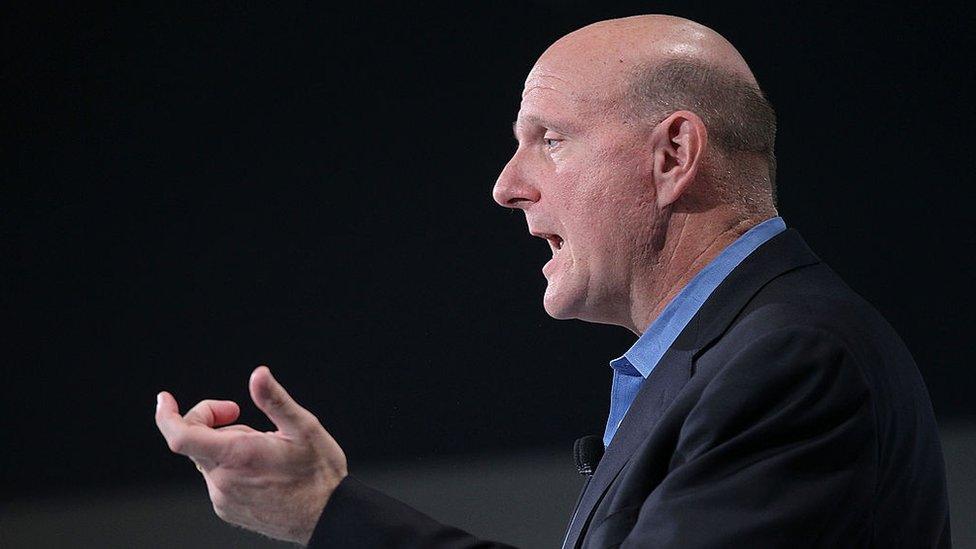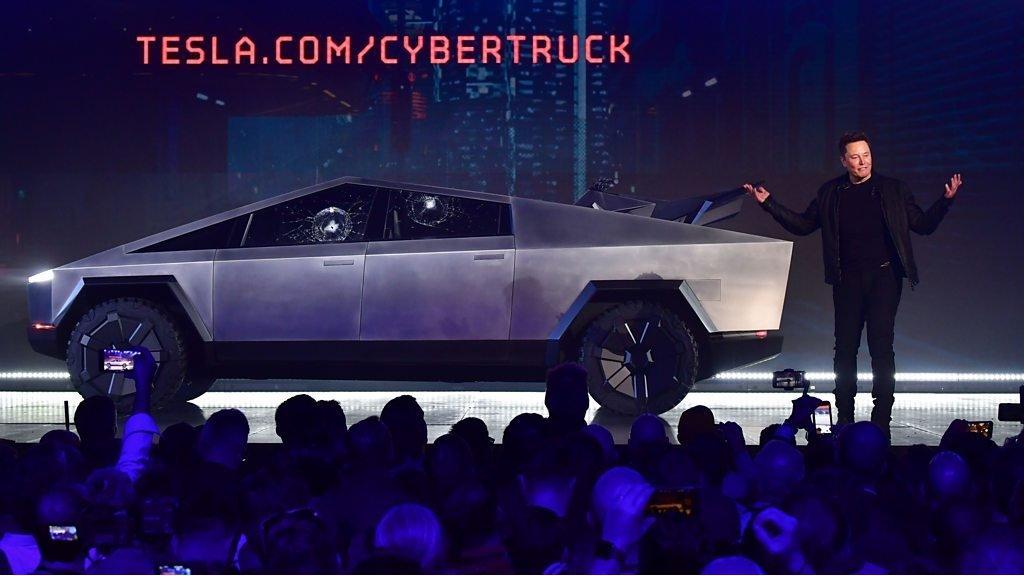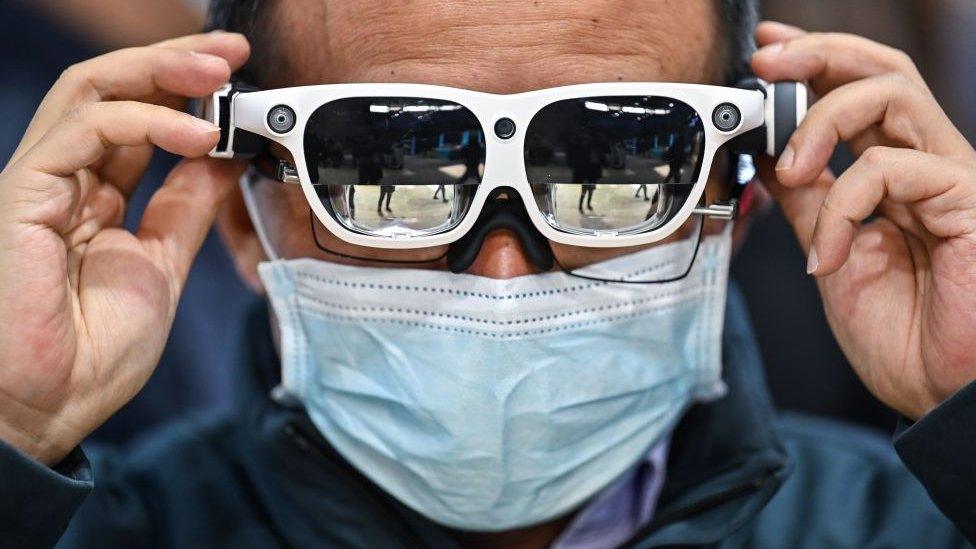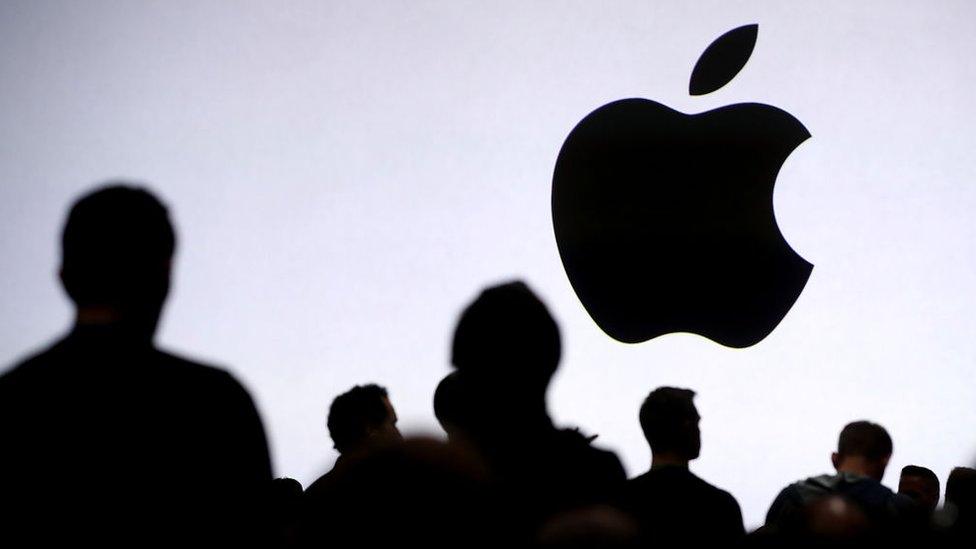Are Apple and others' tech launches a better watch because of Covid?
- Published
WATCH: Five unforgettable moments at past live tech events
"Developers, developers, developers, developers, developers."
In 2000, footage of a sweaty, high energy Steve Ballmer, the then chief executive of Microsoft, became a viral hit after he walked on stage and shouted the same word over and over again.
It was one of many moments over the last 30 years of a live tech event throwing up a must-see moment.
But recently, tech fans have been starved of live launches because of the Covid pandemic.
The keynote speeches, the long demos popularised by Apple's Steve Jobs, among other tech luminaries, have all but disappeared.
Instead, almost all tech companies have turned to virtual events. In most cases, this involves extremely glossy pre-edited videos.
"We all watch them together, quote unquote, 'live' but they're not live. They're pre-recorded and just playing out live. It's like a YouTube premiere," reflects tech commentator Jason Snell.
And some believe this format is here to stay.

Steve Ballmer will long be remembered for his enthusiastic Microsoft stage appearances
No space
This Tuesday, Apple is expected to launch several new iPads and other products this way, having previously revealed new iPhones and even given the keynote presentation at its annual WWDC developers conference by such means.
Many who would have attended in person love the change.
"Last year was one of the best conferences that they've had… very few people did not appreciate that format," says Ish Shabazz, an independent iOS developer, who has taken part in WWDC every year since 2015.
One of the major problems with live events is that there's only so much space in the conference room.
Mr Shabazz says even though he would go to Apple events, he usually couldn't get into the main room.
In fact most of the audience watches remotely, which poses a conundrum.
"You're catering to the people in the audience," explains tech industry analyst Carolina Milanesi.
"So the people at home that are watching, who are the hardcore Apple fans, don't feel as included."
The benefit of a pre-shot video, she adds, is that it now feels like chief executive Tim Cook is speaking directly to each potential customer.
On-stage slips
There are other reasons too that tech companies might like a pre-recorded format.
For one, it eliminates those awkward occasions when something goes wrong.
Over the years there have been many such moments. Looked back on fondly now, at the time they weren't quite as funny for the people involved.
Like the windows of Tesla's unsmashable Cybertruck, that errrr…. smashed instantly when hit with a metal ball.
Apple's brand is based around high-end, beautiful gadgets.
Having on-stage blunders - like when Steve Jobs' iPhone 4 demo crashed in 2010 because of wi-fi issues - doesn't fit with the image it wants to project.

Steve Jobs experienced technical problems at 2010's launch of the iPhone 4
"It fits Apple's brand to have this immaculate, carefully-constructed video where they control everything, and you don't have any of the looseness of a live event," says Mr Snell.
Network effect
Doing a live event can also be expensive, and stressful.
Not all tech CEOs are natural public speakers. Pre-recorded videos, using autocue and as many takes as you want, may suit some.
In many ways then, it makes sense to ditch the live events.
These launches, though, are much more than the presentations themselves.
As Mr Shabazz points out, Apple's annual developer conference is a chance to meet and network with others.
"It's the highlight of my year, honestly. It's when we can go and talk to everyone in the community," he says,
For most of the people who do attend these conferences, developing in-person contacts is a huge draw.
For the tech companies too, live events, with a crowd, are a chance to get some real-time energy into a launch.
"The stagecraft having an audience and applause. It works, right. It's why they do laugh tracks in sitcoms...it's weird without it," says Mr Snell
Certainly pre-recorded videos remove risk, but as anyone who's watched a football match behind closed doors can attest - a crowdless stadium can create a sterile atmosphere. Not what you want when you're trying to get people excited about a product.
Hands off
Virtual events also limit how journalists review products.
"You miss the opportunity to actually touch the devices, and that's important to Apple," says Ms Milanesi.

The highlight of many tech launches is the chance to get hands-on with the gadgets after the presentation
Many companies send the products to reviewers, but there's often a delay from launch to a product being in the testers' hands.
"I think Apple would prefer to have in person if they were launching a new iPhone event or something they wanted to show off," says tech journalist Steven Aquino.
He believes that companies like Apple will move to a hybrid model, with large parts of their conferences pre-recorded, but with live elements mixed in.
Google has signalled that it will try out such a model at its forthcoming I/O developers event next month using an outdoor stage.
It's still not clear when live, indoor events will be possible. But when things do get back to normal, it's likely tech presentations will have changed for good - and perhaps for the better.
James Clayton is the BBC's North America technology reporter based in San Francisco. Follow him on Twitter @jamesclayton5, external.
Related topics
- Published20 April 2021

- Published6 April 2021

- Published23 February 2021

- Published10 January 2021

- Published13 March 2020
